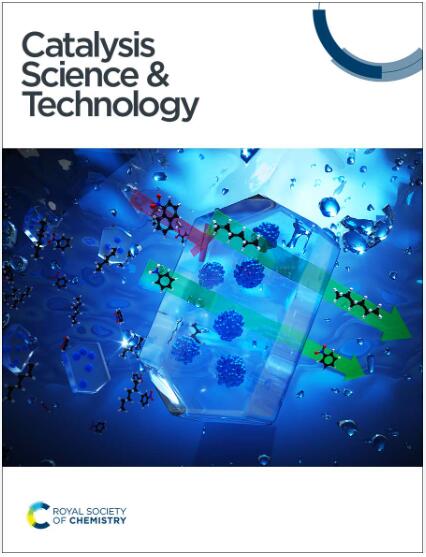Regulation of the oxygen vacancies of WOx for highly efficient catalytic epoxidation of cyclooctene†
IF 4.4
3区 化学
Q2 CHEMISTRY, PHYSICAL
引用次数: 0
Abstract
Oxygen vacancies of the WOx catalyst play a critical role in the epoxidation of cyclooctene. However, the main factor restricting the industrial application of oxygen vacancy-enriched tungsten oxide is deactivation due to oxidation of oxygen vacancies. Herein, WOx with tunable oxygen vacancies was prepared through simple reduction and regeneration of inactivated WO2.72, which exhibited 97.3% conversion of cyclooctene and 99.0% selectivity toward epoxyoctane. The catalytic performance of the catalyst was not significantly reduced after five repeated regeneration cycles. SEM, XRD and XPS characterization presented the variation in the morphology, structure and component of a series of WOx regenerated with different reduction temperatures and times and verified the regeneration of WO2.72 and the presence of abundant oxygen vacancies. In situ DRIFTS demonstrated that appropriate oxygen vacancies improved the adsorption and activation of H2O2 to the hydroperoxide-coordinated HOO–WOx species, which greatly promoted the performance of cyclooctene epoxidation. This paper not only provides a simple, green, and cost-effective approach for the regeneration of the WO2.72 catalyst as an industrial catalyst using oxygen vacancy-enriched tungsten oxide but also sheds light on the mechanism of olefin epoxidation.

求助全文
约1分钟内获得全文
求助全文
来源期刊

Catalysis Science & Technology
CHEMISTRY, PHYSICAL-
CiteScore
8.70
自引率
6.00%
发文量
587
审稿时长
1.5 months
期刊介绍:
A multidisciplinary journal focusing on cutting edge research across all fundamental science and technological aspects of catalysis.
Editor-in-chief: Bert Weckhuysen
Impact factor: 5.0
Time to first decision (peer reviewed only): 31 days
 求助内容:
求助内容: 应助结果提醒方式:
应助结果提醒方式:


